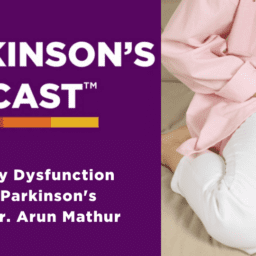Chances are, when you were diagnosed with Parkinson’s, it wasn’t immediate. You went to a few doctors. You got a second opinion. Maybe you were even given a Parkinson’s diagnosis by one doctor in January, only to get a Parkinson’s Plus, or Parkinsonism, diagnosis nine months later.
You aren’t alone. Parkinson’s is complicated, and other conditions have symptoms that often look like straight-up Parkinson’s. These conditions are called parkinsonisms, and the similarities between Parkinson’s and parkinsonisms can lead to difficulties in establishing a diagnosis. In fact, a common reason it may take weeks, months, or even years for your doctor to establish a diagnosis is that sometimes the only way to determine the difference between types of parkinsonism is to see how the symptoms change over time.
This long delay can contribute to anxiety as you wait for a diagnosis and doubt you feel regarding a diagnosis when you receive one, but there are ways you can assist your doctor during the diagnostic process and help increase the certainty of a diagnosis. To do this, it’s important to understand the way Parkinson’s and parkinsonism are diagnosed, the diagnostic tests that may help in this process, and some differences between the different types of parkinsonism.
Diagnosing Parkinsonism
Doctors diagnose Parkinson’s and other types of parkinsonism by performing a physical observation of your symptoms and considering the history of those symptoms. Some observations are made visually, and others are made when the doctor manually moves your limbs to evaluate symptoms like rigidity.
Because these observations are not always conclusive, there are also tests a doctor can order to help with establishing a diagnosis. These diagnostic aids include an MRI, a DatScan, genetic testing, and the SynTap test.
Notes about Diagnostic aids and Parkinsonism
An MRI is often used to rule out any structural issues with the spine, neck, or brain that might explain the symptoms you are experiencing. However, even if an MRI indicates that there is a structural cause, it can not entirely rule out that you have Parkinson’s.
DatScan results indicate the distribution of dopamine transporter in a particular part of the brain. When the dopamine transporter appears in particular patterns, a DatScan is compatible with a Parkinson’s diagnosis, but a DatScan cannot differentiate between all parkinsonisms.
Genetic testing can help to identify genetic variants that are known to be associated with Parkinson’s. If you have genetic testing that indicates the presence of one or more of these variants, this can help clarify the most likely interpretation of your physical symptoms.
The SynTap test, which recently made headlines for its use in a Parkinson’s biomarker study, identifies abnormalities in the way the protein alpha-synuclein is structured in a sample of your cerebrospinal fluid. This test is still fairly new but has been verified as a reliable diagnostic aid. Four important things to know about the SynTap test include:
- This test requires a lumbar puncture/spinal tap.
- This test detects Parkinson’s less accurately in people with LRRK2 mutations.
- At present, this test, on its own, cannot distinguish between conditions that involve abnormal alpha-synuclein, like Parkinson’s, Lewy Body Dementia, and Multiple System Atrophy (MSA).
- While this test is FDA-approved, it’s not yet covered by insurance, though the manufacturer of the test offers some financial assistance.
Differentiating between Parkinson’s and Parkinsonisms during Diagnosis
Below, you can find information about diagnostic tools or data that can help your doctor determine a diagnosis.
- A DatScan can help to differentiate between multiple parkinsonisms. For example, DatScan results will typically appear normal in instances of drug-induced parkinsonism, vascular parkinsonism, and essential tremor. Note, however, that a normal DatScan result does not rule out the development of Parkinson’s or a syndrome that would cause an abnormal DatScan result in the future.
- An MRI can find structural damage to the brain, like that which can be caused by exposure to toxins like carbon monoxide and metals like lead and manganese.
- To differentiate between Lewy Body Dementia (LBD) and Parkinson’s, observing the effect of levodopa can be helpful. For one thing, the use of dopaminergic treatments may worsen cognition and influence aspects of behavior, but these therapies also tend not to have significant effects on movement symptoms of LBD. More broadly, current diagnostic criteria state that if cognitive symptoms predate other Parkinson’s symptoms or develop within the first year of other Parkinson’s symptoms, then LBD may be the diagnosis. Alternatively, if cognitive issues arise after a person has been living with Parkinson’s, this may be called Parkinson’s Disease Dementia. Cognitive assessments like the MMSE and MoCA can also be informative, as can a variety of imaging studies, including CT scans, MRI, PET Scans, and SPECT scans.
- As with LBD, evaluating the effect of levodopa can help differentiate between Multiple System Atrophy (MSA) and Parkinson’s. Often, the symptoms of people with MSA have a good initial response to levodopa, but the efficacy lessens quickly. Additional signs that differentiate MSA from Parkinson’s include early dyskinesias, speech difficulty, and gait disturbance. Tests of autonomic function can be informative because early and prominent autonomic dysfunction is common in MSA.
- Progressive Supranuclear Palsy (PSP) is associated more with abnormalities in the protein tau than with abnormalities in alpha-synuclein, and because of this, the SynTap test may help distinguish between PSP and Parkinson’s, LBD, or MSA. This is because the SynTap test will identify abnormalities in alpha-synuclein but not tau. Note, however, that this use of the SynTap test will not be conclusive. Genetic testing can also help identify if you may have a mutation that influences your body’s tau production, and neuroimaging studies of the midbrain may also be helpful, but more work is needed to fully understand the usefulness of these results. Consulting with a neuro-ophthalmologist can also be informative due to the frequent motor control issues involving the eye in PSP.
- As with PSP, Corticobasal Degeneration (CBD) involves tau, so the SynTap test may be informative. Loss of limb control and alien limb syndrome are also associated with CBD. Imaging studies that show asymmetric atrophy may be helpful, but they cannot be the basis of a diagnosis of CBD on their own.
- Genetic testing can help distinguish between Wilson’s disease, Parkinson’s, and some other parkinsonisms. A copper study can be informative relative to Wilson’s disease.
What your doctor needs to know
There is a lot of information that can help establish clarity about a diagnosis of Parkinson’s, so be as thorough as possible when providing your doctor with information about your health history. Include details about your family history and your lifestyle.
An experienced Parkinson’s specialist will likely ask about these things, but to help differentiate between Parkinson’s and other possible diagnoses, be sure to share the following with your doctor:
- When your symptoms began, and what you think your earliest symptoms were
- How your symptoms have changed over time
- If and how you’ve fallen as some parkinsonisms are associated with early falls, and PSP is associated with falling backward
- If you have trouble keeping your posture stable, as some parkinsonisms involve more prominent postural instability and gait disruptions
- A complete list of medications and supplements you take, as some medications can induce parkinsonism
- Any possible significant exposures to pesticides or other toxins
- What you do for work and what you do for fun because some jobs and hobbies, like metalwork and gardening, may expose you to toxins that can be relevant to your diagnosis
- Your family history, especially any family history of Parkinson’s or other parkinsonism
Because appointments with care providers can go quickly, and it’s easy to forget what you planned to mention, create a document before you go to your appointments that list all information you think may be relevant. Do this a week or more before you visit with your provider, and then share this list with friends and family to see if they think of anything you overlooked. The resulting conversation may also spark your memory about other details you should add.
A Parkinson’s diagnosis can be hard to accept, and the difficulties that many people experience in receiving a diagnosis can be frustrating, anxiety-inducing, and scary. However, with planning, forethought, and some at-home education, you can help expedite and clarify the diagnostic process. More importantly, how you respond to your diagnosis will have a greater influence in the long term than the specifics of how your diagnosis occurred. You can live well with all forms of parkinsonism, and the most essential ways to do that are the same regardless of the particulars of your diagnosis: build a strong care team, exercise, eat well, and maintain an active social life.
Additional Resources
The Differential Diagnosis of Parkinson’s
MSA Association: Signs It Could Be More than Parkinson’s
Progressive Supranuclear Palsy Overview
National Organization for Rare Disorders
WANT MORE PRACTICAL Resources LIKE THIS?
You can learn much more about living well with Parkinson’s today through our Every Victory Counts® suite of resources. Each manual is packed with up-to-date information about everything Parkinson’s. Click the link below to order your manual(s).
Thank you to our 2023 Peak Partners, Amneal and Kyowa Kirin, and our Every Victory Counts Gold Sponsor, AbbVie Grants, for their ongoing support of these must-have manuals. Additionally, we’d like to thank Barbara and Dale Ankenman, Abby and Ken Dawkins, Bonnie Gibbons, Gail Gitin in loving memory of Gene Gitin, Irwin Narter, and Lorraine and J Wilson for their generous donations that allow us to make these resources available and free to all.

















